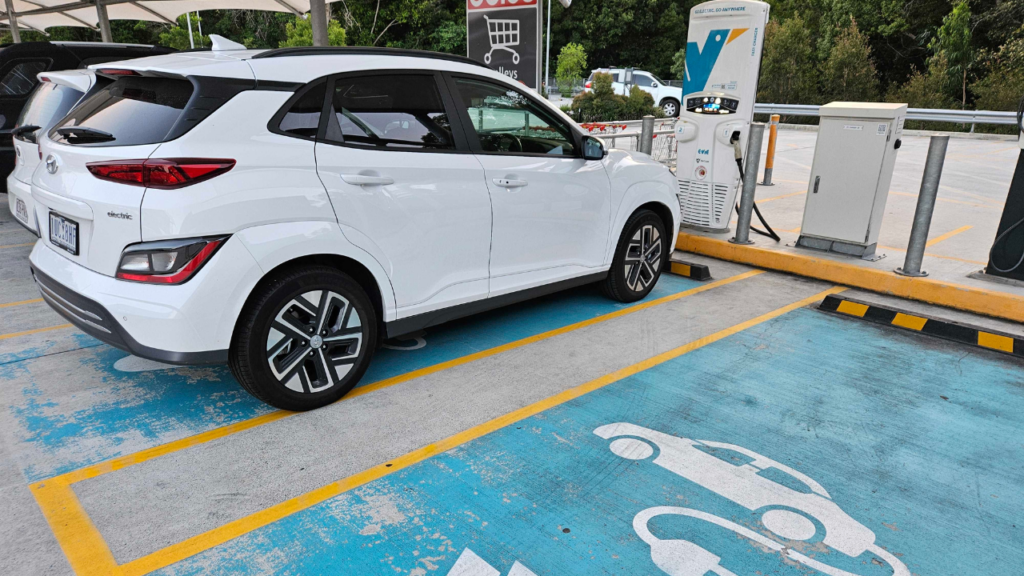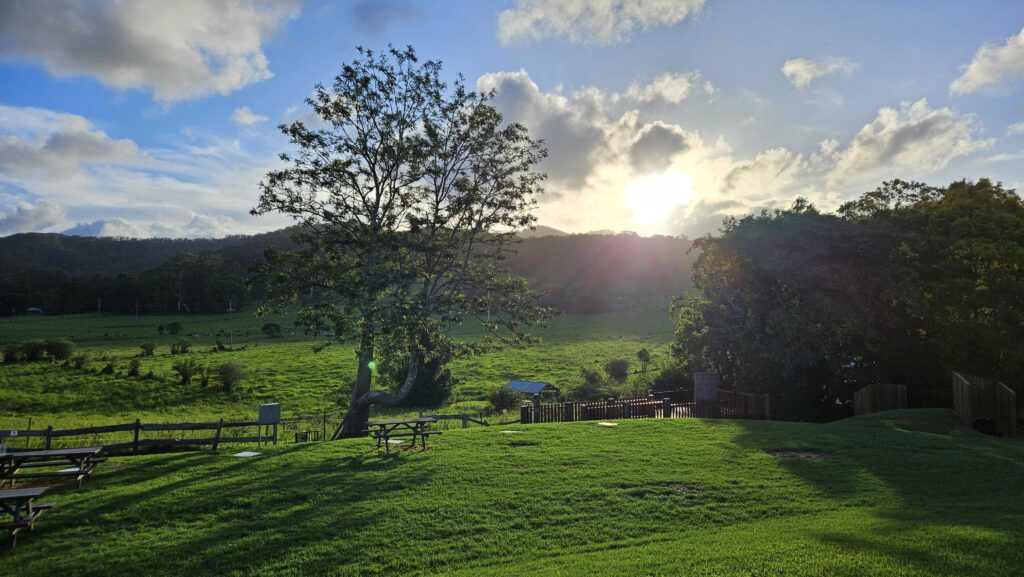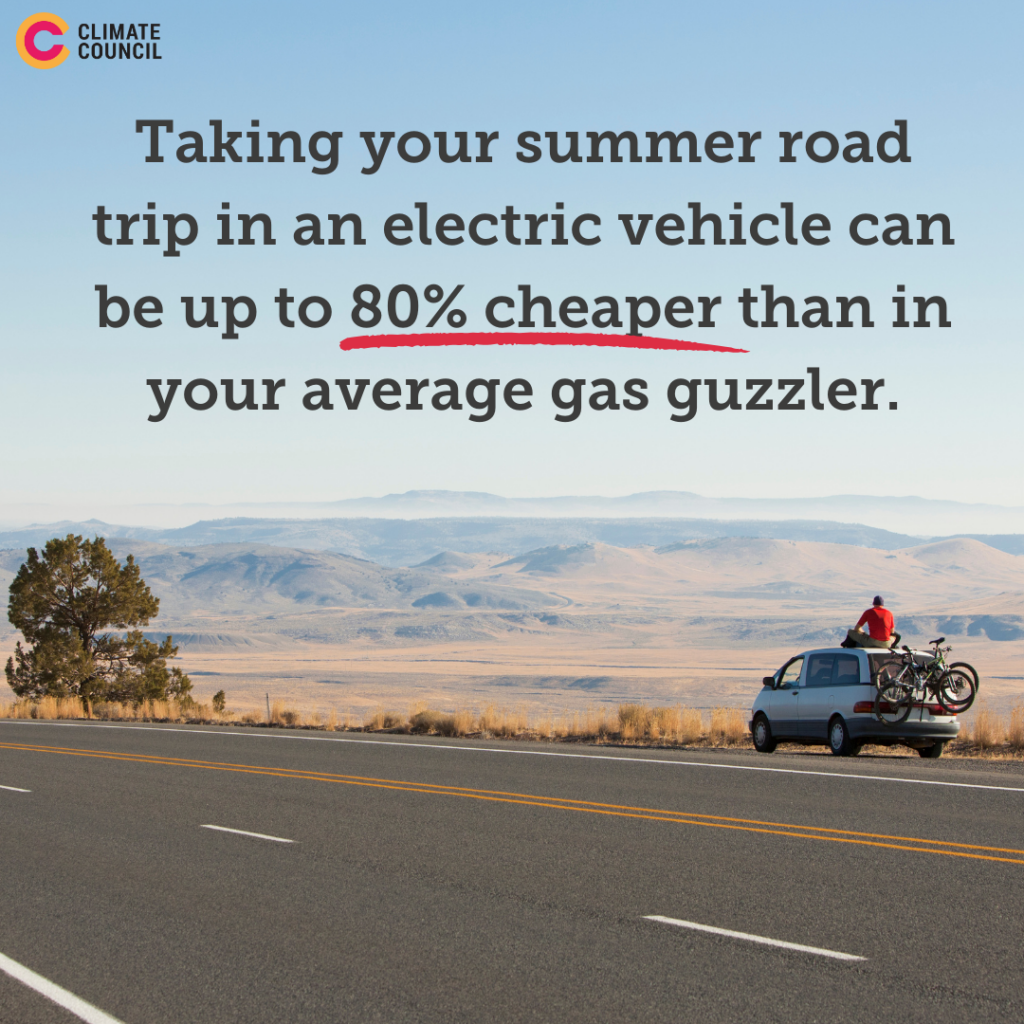Summer hols, here we go…
So what’s the plan? Drive our electric car from Melbourne to the Sunshine Coast and back, taking in the epic Victorian Alpine Country and stunning NSW-Queensland coastline and hinterland. That’s just a casual 4,300km round trip.
I love our electric vehicle (EV) – it has close to a 500 kilometre range – yet it’s fair to say I was concerned about the chance of not finding a charging station at points throughout our journey, given the peak summer period traffic, extra luggage weight and air con use. But my travel companion and co-pilot (my wife Michelle) and I were up for the challenge (although she did veto the purchase of reindeer antlers for the car)
So, let’s unpack our journey!
Planning our trip
There are a few apps available to help with trip planning, such as PlugShare, ChargeFox, Evie and the one we opted for, ABRP (A Better Route Planner). Once you’ve entered your car’s details the app can factor in everything from weight to how much charge you’re starting with and use this information to generate options for charging stops along your specified route. Using an app like these took the guesswork out of it, and meant we were confident that we’d have enough charge for the different stages of our trip.
And we’re off!
Making sure we were fully charged, we hopped in the car, buckled up, and set course for the sunshine state. But first, we had to select some tunes to send us on our merry way. First, we chose ‘The Chain’ by Fleetwood Mac, which was the theme song for the BBC’s F1 show when I was a kid growing up in Scotland. Mind you, we didn’t plan on breaking any speed records but it did remind us that you can add your cruising speed on the trip planning app as another factor in the charging equation.
While we’re on music, did you know that 80s pop band ‘A-ha’ was instrumental (‘scuse the pun) in getting Norway to embrace EVs? The power of music knows no bounds!

Our first stop was Glenrowan, where we plugged in to recharge the car and I grabbed a coffee. For most of the trip, we tended to charge the car from 20-30 percent to 80 percent battery level in around 30 to 40 mins.
Something I hadn’t expected was that charging your EV is such a social experience. The process of charging your car over thirty minutes or so provides a chance to interact with fellow EV drivers, discuss travel plans and share experiences of charging your cars, and swap tips about the different providers and apps to use. It’s a fun collective learning experience.
Over the course of our summer road trip, at various charging stations along the highway, we met all sorts of people. There was a young family travelling from Queensland to Tassie in their EV, a student and his girlfriend taking his mum’s EV on a road trip from NSW to Victoria, young students from Sydney checking out the Gold Coast in an EV hire car, and a retired couple touring NSW.
Only twice over the course of 4,300 km did we have to wait for a charger to be free to use – not bad considering it was peak holiday season. On one of those rare occasions, I got chatting to a fellow named Shane, whose car was charging in the station we needed. When we realised we had some overlapping charging time, Shane offered to plug our car in for us while we went for dinner and text us to let us know when to hit charge on the app. With a charged up car and appetites satisfied, we hit the road again. Thank you very much, Shane!

Charging your EV doesn’t need to be a chore. You can chat to fellow travellers, take a power nap, explore the surrounds, grab some food or read a book. While charging at Coffs Harbour, we swam laps at the nearby pool and had a coffee before hitting the road again. In Glenrowan, we checked out the Ned Kelly museum. On one of our stopovers in NSW, we had dinner at an incredible pub which was powered by solar PV.
And it wasn’t all fast charging either. A small town near ACT (where we stayed overnight) kindly provided free ‘trickle charging’ using a Type 2 Portable EV Charger with 10 Amp plug. We also did this at the home of our friends in the Hunter region in NSW. At another friend’s place in Fingal Head, northern NSW, we used their home Type 2 EV charger.
In total, our 4,300km summer road trip from Melbourne to Queensland’s sunshine coast and back again cost us around $300 in charging fees. If we had done this trip in a petrol car, it could have cost us between $560-$920.


In fact, the Climate Council’s latest analysis shows that drivers taking their families on holiday by charging a battery electric vehicle pay only a quarter (24%) of the cost of filling up an average petrol car in New South Wales, a fifth (21%) in Victoria, almost a fifth in Queensland (19-20%) and the Australian Capital Territory (17%).
The big takeaway after my summer roadtrip? EVs are no longer the cars of the future; they are the cars of today.
Australia is getting its wheels in motion, but it needs to move into the fast lane and help Aussies access cleaner cars that are cheaper to run . Right now, Australia pales in comparison to EV uptake and infrastructure abroad because we’re one of the only wealthy countries without mandated fuel efficiency standards for new vehicles. We need these regulations, alongside investments in charging infrastructure, to support the uptake of low and zero emissions vehicles in Australia.
It’s high time for Australia to get on the path to cleaner transport. EVs, alongside a mix of walking, bike riding, and public transport, will play an important role in cutting transport emissions this decade. The great news is that transforming how we get around is not only great for the environment, but for our wallets, our lungs and our communities.
In the meantime, I’m back home in Melbourne where it’s time to give the car a holiday and jump back on the tram to work or get on my bike to exercise the ghost of Christmas past puddings. Until next year!
Details on the trip and charging costs were supplied by the case study. This was compared to the average Australian passenger vehicle defined by ABS (journey cost of $923 with 11.1L/100km fuel consumption) and a Toyota Camry (journey cost of $565 with 6.8L/100km fuel consumption). The average fuel costs refer to the week ended 24 December for 2023 when the trip began and are used for the duration of the trip. Where a journey crosses into another state, the fuel costs of the origin state are used throughout. EV charging costs can differ substantially depending on the type of charging used, while home charging with solar is the cheapest (other than free public charging), grid charging sits in the middle, and public charging via standard AC and fast DC charging can be more expensive.